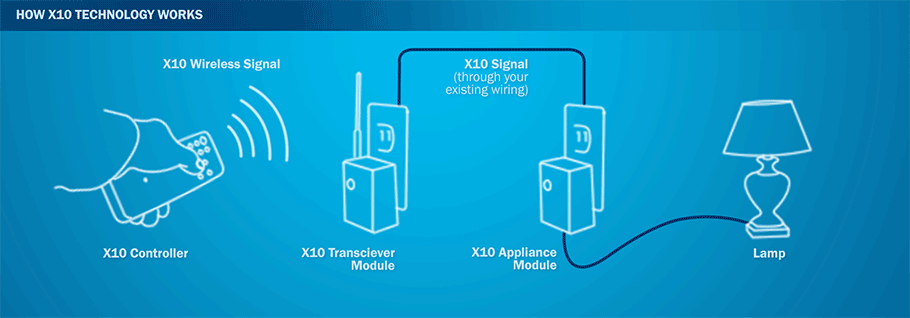X10 is a protocol for communication among electronic devices used for home automation (domotics). It primarily uses power line wiring for signaling and control, where the signals involve brief radio frequency bursts representing digital information. A wireless radio based protocol transport is also defined.
X10 was developed in 1975 by Pico Electronics of Glenrothes, Scotland, in order to allow remote control of home devices and appliances. It was the first general purpose domotic network technology and remains the most widely available.
Although a number of higher bandwidth alternatives exist, X10 remains popular in the home environment with millions of units in use worldwide, and inexpensive availability of new components.
Protocol
Whether using power line or radio communications, packets transmitted using the X10 control protocol consist of a four bit house code followed by one or more four bit unit codes, finally followed by a four bit command. For the convenience of users configuring a system, the four bit house code is selected as a letter from A through P while the four bit unit code is a number 1 through 16.
When the system is installed, each controlled device is configured to respond to one of the 256 possible addresses (16 house codes × 16 unit codes); each device reacts to commands specifically addressed to it, or possibly to several broadcast commands.
The protocol may transmit a message that says “select code A3”, followed by “turn on”, which commands unit “A3” to turn on its device. Several units can be addressed before giving the command, allowing a command to affect several units simultaneously. For example, “select A3”, “select A15”, “select A4”, and finally, “turn on”, causes units A3, A4, and A15 to all turn on.
Note that there is no restriction that prevents using more than one house code within a single house. The “all lights on” command and “all units off” commands will only affect a single house code, so an installation using multiple house codes effectively has the devices divided into separate zones.
Source: X10 Basics

